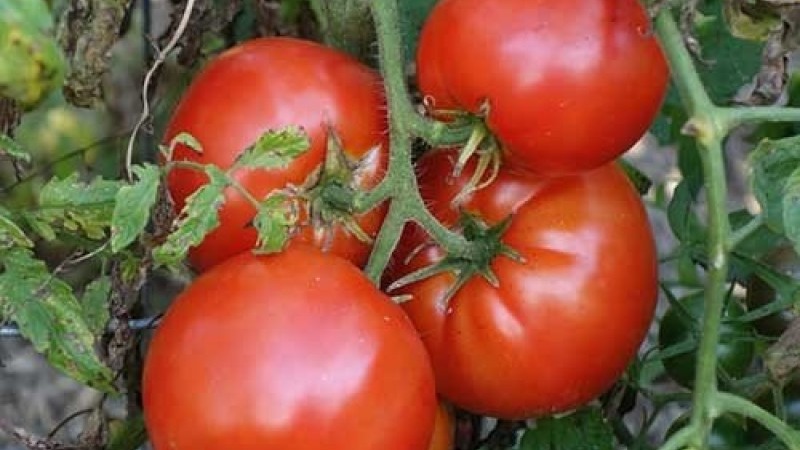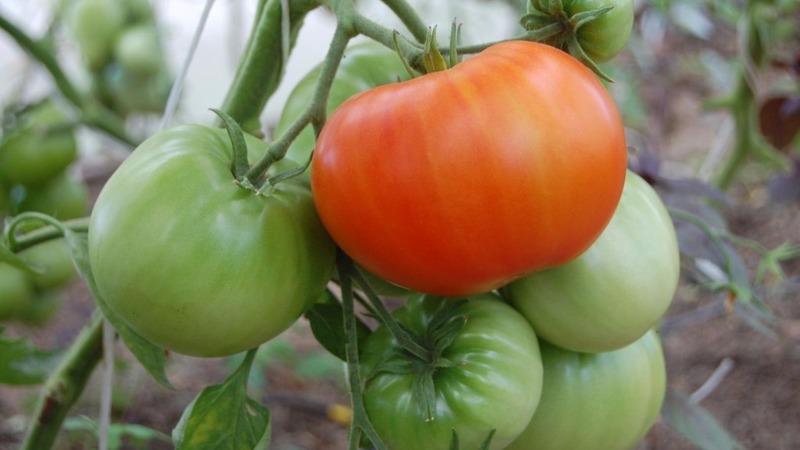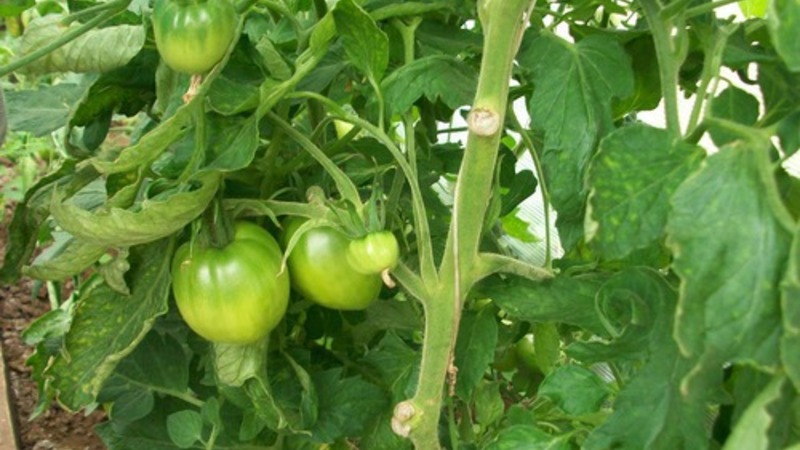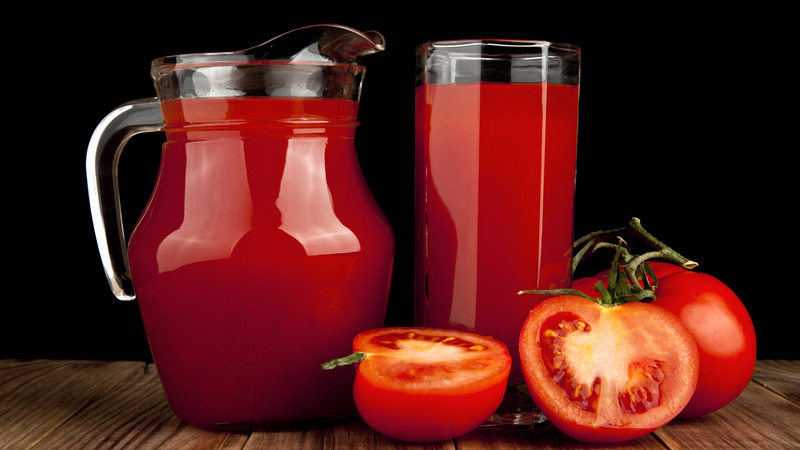Difficult to care for, but incredibly productive variety of domestic selection - the "Cosmonaut Volkov" tomato
Tomato Cosmonaut Volkov is a famous variety among gardeners. It is distinguished by large fruits of excellent taste, rich in vitamins and nutrients. This culture is time-tested and takes pride of place not only in the list of popular domestic varieties, but also in the hearts of gardeners. Despite numerous novelties, the variety is in great demand in the sales markets.
The article will reveal the secrets of yield and introduce you to competent agrotechnical techniques that will undoubtedly help you grow healthy plants with a decent harvest.
The content of the article
Characteristics and description of the variety
The unusual name of the variety is the result of strong friendship. The Russian cosmonaut IN Maslov, after retiring, took up gardening. As a result of his persistent work, a tomato was born, which Maslov named after his best friend, pilot-cosmonaut Alexander Alexandrovich Volkov, who tragically died in 1971 in the accident of the Soyuz-11 spacecraft.

Distinctive features
The type is indeterminate, tall, up to 2 m high. The first brush is tied over 9 leaves, the subsequent ones every three leaves.
A mid-early variety, 110-120 days pass from the moment of the first shoots to full ripening.
The yield is high, up to 7 kg of fruits are harvested from 1 seedling, provided that no more than 3 plants are planted per 1 sq. m.
The variety is distinguished by persistent immunity to many dangerous diseases of the nightshade family. Recommended for cultivation in open and protected ground, perfectly adapted to any climatic conditions.
The culture needs the obligatory garter and pinching of tall bushes.

Fruit characteristics
Fruits are large, with an average weight of 500-650 g. Vegetables on the lower branches are the largest, their weight reaches 800 g. The shape is round, strongly flattened on top, the color is bright red. The taste is excellent, sweet, harmoniously combined with sourness. The pulp is juicy, fleshy. Seed chambers 6-7.
The purpose is universal: tomatoes are suitable for preparing fresh meals and winter preparations. Ripe vegetables are processed into juices and ketchups. Despite the large size, the fruits are stored for a long time without loss of quality. Tomatoes also perfectly withstand long-distance transportation.
The photo shows the tomatoes Cosmonaut Volkov.

How to grow seedlings
Sowing seeds begins 2 months before planting seedlings in the ground. Seed material is bought in specialized stores or harvested independently. Purchased seeds do not need processing. Before sowing, only those grains that have been harvested on their own undergo special training.
Seed preparation
The inoculum is checked for suitability by placing it in a saline solution for 10 minutes. Those that float to the surface are empty, they are disposed of. After the seeds are placed for 20 minutes in a weak solution of potassium permanganate. Thus, the grains are disinfected. After disinfection, they are washed with running water.
To improve germination, the seeds are germinated on damp gauze for 2-3 days. A place for germination is chosen dark and warm, with a temperature of at least 26 ° C. As it dries, the gauze is slightly moistened with warm water.After the appearance of the first sprouts, the seeds are sown in the ground.
Capacity and soil
The soil is prepared from garden soil mixed with humus in equal amounts. For the lightness of the soil, washed river sand is added as a baking powder. After thorough mixing of all components, the soil is disinfected to destroy the pathogenic flora.
To do this, it is spilled with a hot solution of purple potassium permanganate or steamed in the oven for at least 15 minutes at a temperature of 50 ° C. The cooled soil is laid out in planting containers, having previously made small drainage holes at the bottom so that excess moisture can drain into them.
They are planted in a common wooden box or in separate containers. From individual containers, peat pots are preferable, as they simplify further care.
reference... The walls of the peat pots feed the young roots with additional nutrients throughout the entire growth period of the seedlings.
Sowing
The seeds are sown in grooves 2 cm deep, sprinkled with earth on top and poured abundantly with warm, settled water along the edge of the containers. Then the containers are covered with foil or glass and left in a warm and dark room at a temperature of 22-24 ° C.
Further care of seedlings
When shoots appear, the containers are rearranged to a well-lit place, on the windowsill... The duration of daylight hours is at least 13 hours. With a lack of natural light, they are supplemented with phytolamps.
Water the soil as the top layer dries up with warm, settled water, without flooding the seedlings. For watering, use a shallow watering can or an ordinary tablespoon. After that, the soil is loosened, thereby improving the penetration of oxygen. To accelerate the growth of seedlings, add Nitrofoski solution to watering.
When 2 true leaves appear, the seedlings are dived, seated in separate containers. The picking procedure is to remove the main root by one third. During a pick, weak and non-viable plants are disposed of. If the seeds were sown in peat pots, picking is not required.
reference... Diving helps to strengthen the root system, since after the procedure the lateral roots are intensively built up.
2 weeks before transplanting, young plants begin to harden, thereby helping to adapt to new conditions. For this, containers are taken out into the street in the daytime for 1 hour, gradually increasing this interval to 11-12 hours. At the same time, the night temperature is reduced to 13 ° C.
How to grow tomatoes

After 2 months, the seedlings are ready for planting in the ground. The soil is prepared in the fall - it is dug up and fertilized with compost. If the soil is clay, it is diluted with sand and humus, since the tomato loves light and fertile soil.
Landing
For 1 sq. m place no more than 3 plants in a checkerboard pattern. This method of planting allows each bush to receive enough sunlight and regularly ventilate.
The seedlings are transferred into holes 20 cm deep together with a lump of earth. Then the holes are covered with soil and watered abundantly with warm, settled water. Full care begins after 2 weeks, when the young bushes finally adapt to the new conditions.
reference... It is not necessary to replant seedlings from peat pots. They are lowered into the well along with the container. In the ground, the pots dissolve without harming the root system, and continue to feed the roots with useful substances.
Further care

Regular watering is set once a week. Water abundantly - under each bush at least 5 liters of warm water... This mode remains until the beginning of budding. After the buds appear, they are watered more often, 1 time in 4 days, spending 3 liters of water for each seedling.
When the fruits ripen, watering does not stop, as this can lead to cracking of vegetables. For irrigation, water is collected in a large container exposed to the sun. Within 2-3 days, the water is heated and settled.
After each watering, the soil is loosened, removing all weeds with roots. To retain moisture in the soil, the beds are mulched with peat.
reference... In addition to the necessary agrotechnical techniques, loosening and mulching the beds serve as preventive measures in the fight against fungal diseases and many pests.
Throughout the entire cultivation time, the tomato variety Cosmonaut Volkov constantly needs additional feeding. Until the budding period, it is fed with nitrogen fertilizers: mullein infusion, herbal infusion or urea. Plants should be watered only with highly diluted organic matter, otherwise the root system will receive a serious burn. The optimal dilution ratio is 1:15.
During the formation of ovaries, potassium-phosphorus fertilizers serve as fertilizers. It is not necessary to add nitrogen further, since oversaturation will lead to the growth of green mass, which will negatively affect fruiting. For tomatoes, feeding with wood ash is useful, which is added to watering during the ripening of the fruit.
Features in care and possible difficulties
Plant height requires a mandatory garter. Tall bushes are best tied to a trellis. For this, supports are installed from different sides of the beds and a wire is pulled between them. The stems and branches of plants are fixed to a wire stretched horizontally. If there are few bushes, they are tied to wooden stakes installed next to each seedling during transplantation.
If the culture is planted in a greenhouse, you need to take care of good lighting. Lack of light will negatively affect the growth of seedlings, which will stretch towards the ceiling of the greenhouse. In this case, a thin and fragile stem will not be able to provide the forming fruits with the necessary nutrients, and the yield will be significantly reduced.
Attention! The indeterminate type of growth restriction does not have, therefore, in mid-July, the tops of the plants are pinched, thereby marking the point of growth. Otherwise, the bush will form incompletely.
Plants are grown once a week, forming 1 or 2 stems. All excess shoots are removed, preventing them from consuming the nutrients needed by the developing fruit. Late brushes, despite the ovaries forming on them, are cut off. Tomatoes, in any case, will not have time to reach technical maturity, but they may well cause the spread of fungal infections.
Diseases and pests
Improper watering and violation of the temperature regime contribute to the development of brown spot (cladosporium). This is a fungal disease, the preventive measures of which are systematic loosening, moderate watering, weed removal and regular ventilation of closed structures.
When plants are damaged, the preparations "Hom" and "Fitosporin" are used. Alternative methods also help, for example, an aqueous solution of iodine (40 drops per 10 liters of water), which is watered on well-loosened areas.
Of the pests for tomatoes, the whitefly, a white moth that harms the leaves, is dangerous. In the fight against it helps the drug "Confidor" or pheromone traps installed next to the tomatoes.
The greenhouse spider mite from the bushes is scared off by the soapy solution that is sprayed on plants, especially the affected areas. Regular airing of the greenhouse destroys the habitat of the parasite. But do not forget that tomatoes do not like drafts.
Constantly damp beds increase the risk of slug infestation. To prevent pests around tomato bushes, sprinkle the ground with ash or ground hot pepper.
Nuances for greenhouse conditions and open ground
Difficulty in care arises due to the large size of the bush... We have to build a trellis to which the stem and branches of the plant are tied. It is not always possible to tie up all the branches. Often, additional supports are required for heavy bunches of fruits.
Lower branches are the least convenient for fixation.The vegetables of the greatest weight ripen on them, which bend the fruit-bearing clusters to the ground. If these branches are left unsecured, constant contact of vegetables with damp beds will cause them to rot and increase the risk of developing fungal infections.
 The tomato does not like frequent watering, it is better to water less often, but abundantly. The wrong irrigation regime affects the quantitative indicator of fruiting. Plus, ripe vegetables can have a watery taste.
The tomato does not like frequent watering, it is better to water less often, but abundantly. The wrong irrigation regime affects the quantitative indicator of fruiting. Plus, ripe vegetables can have a watery taste.
When planted in a greenhouse, the topsoil must be replaced every season. In the ground, the larvae of insect pests and disease-causing spores successfully winter, which begin to develop in the spring, causing harm to healthy plants. The introduced soil is disinfected without fail, spilling with a solution of potassium permanganate and processing with copper sulfate.
According to the rules of crop rotation, tomatoes are planted in the land where legumes, cabbage, zucchini, and winter crops previously grew. After them, the soil is not depleted, but, on the contrary, is filled with nitrogen, which is necessary for the full development of tomato crops.
Harvesting and application of the crop
Harvested in August - late July. Maturing amicably, with whole brushes. It is important to try to prevent overripening of the fruits, since the branches, despite a reliable fixation, find it difficult to hold heavy vegetables.
The purpose of tomatoes is universal: tomatoes look great in a salad, complement the taste of first and second courses, and are good in a vegetable stew. They make excellent fresh juice.
For canning and pickled vegetables are used cut, they are too large for whole-fruit seals. Tomato products (juice, paste, adjika, ketchup) are given a rich red color and excellent taste by tomatoes, while retaining sweetness, harmoniously combined with sourness.
Ripe vegetables are stored for a long time and can withstand long-distance transportation. But the keeping quality of the fruits is preserved only under the condition of proper care for them: abundant, but not frequent watering, regular feeding and timely garter and pinching the tops of the plants.
reference... The quality of the fruit depends on the care of the tomatoes.
Advantages and disadvantages
Despite some difficulties in care, tomato has many advantages:
- high productivity;
- the possibility of breeding in all regions;
- resistance to dangerous diseases;
- mid-early ripening;
- the ability to independently prepare seeds;
- great taste;
- large fruits;
- amicable maturation;
- versatility in cooking.
The disadvantages of the variety include:
- regular pinching;
- obligatory garter;
- regular feeding;
- mandatory watering regime;
- the influence of agricultural technology on the quality of ripe vegetables.
Farmers reviews

The reviews of those who planted the tomato Cosmonaut Volkov indicate: this is not the variety from which it is worth starting to master the cultivation of tomato crops. However, for experienced gardeners, experts advise this particular tomato as a reliable large-fruited crop. Here are the opinions of some gardeners.
Irina, St. Petersburg: “I plant tomatoes in a greenhouse, I always fertilize the soil with humus beforehand. The seeds germinate well, the seedlings are strong and healthy. The variety pleased with a decent yield. The bushes grew up to 2 m. We managed to grow fruits of a record weight - 870 g. The taste is excellent, I have prepared a lot of juices and salads for the winter. "
Vasily, Saratov: “In the photographs, the tomato variety Cosmonaut Volkov is very tall, so he put a trellis in the garden in advance. Tomatoes were regularly watered and fed with mineral fertilizers. The fruits are very large and tasty. Appointment salad, too large for canning. The approximate weight of a tomato is 450 g. Next year I will repeat the planting. "
Conclusion
Judging by the characteristics and reviews of the variety, photo and description of the fruits, the Cosmonaut Volkov tomato occupies a confident position, despite some difficulties that arise when growing a crop.
High rates of fruiting, resistance to various diseases, quick adaptation to weather conditions outweigh the disadvantages. A tall tomato has been giving rich large-fruited yields in various regions for decades.